Home Page › Blog › Everything You Need to Know About Service Dog Supplies
Everything You Need to Know About Service Dog Supplies
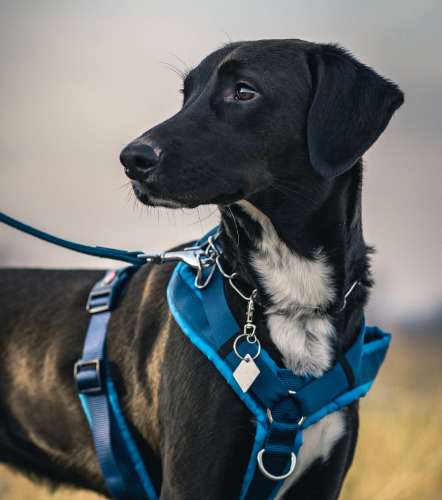
Unlike most dogs, Service Dogs go to work every day to fulfill their job in supporting their handlers with their specific needs. Just like humans, to do their work, they might need a uniform and tools to make the job easier. A shopping list of essential supplies for a Service Dog could include the following items:
- Vests
- ID Cards
- Paw Mittens and Booties
- Collar
- Leash
- Head Halter
- Harness
- Toilet or Waste Kits
- Clickers
- Muzzle
- Toys, Treats, and Relaxation
Vests
The vest is an essential Service Dog gear. Although Service Dogs aren’t legally required to wear one, vests do provide a level of authority and convenience. They are also a courtesy to bystanders by visually communicating that a dog is working in an official capacity.
The vest grants entry into an establishment or area where animals would be otherwise be prohibited. The American Disabilities Act allows Service Dogs into any spaces where their owner goes, and a vest alerts everyone that a dog is a Service Dog and must accompany its owner.
The most popular, and useful, style is the Cape Style Service Dog vest. It’s easy to place over the dog and provides enough areas with pockets. A vest should fit snugly around the dog, without restricting the dog’s movement. The vest should also be padded and made of a non-abrasive material to reduce friction and injury to the dog.
A patch can be placed on a Service Dog vest to provide further information to others. A “no petting” patch might also help deter people who don’t know that Service Dogs should not be petted while they are at work. Although not necessary, patches can communicate whatever a service dog owner thinks is necessary for others to know.
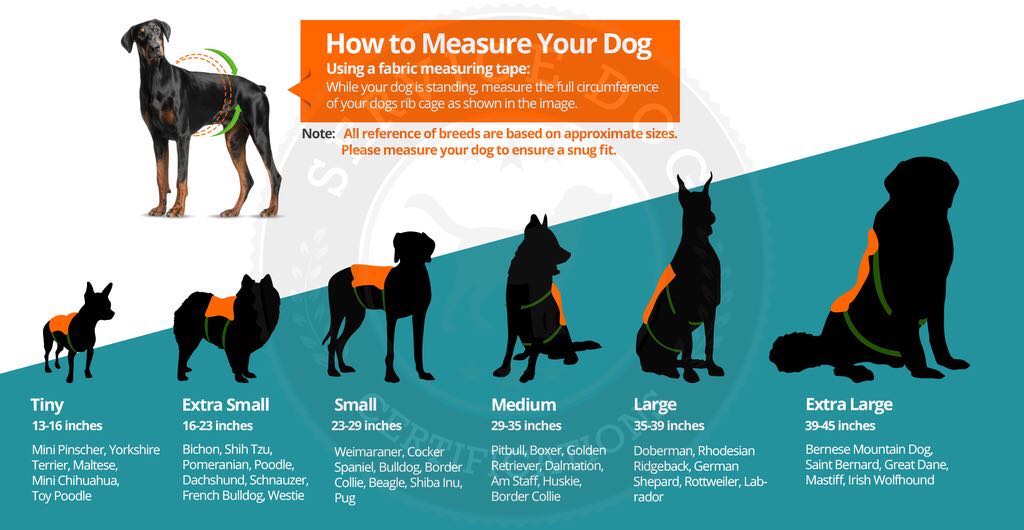
ID Cards
An ID card is not necessary for a service dog. However, a Service Dog ID can provide the following benefits:
- Permits access to areas denied to other dogs.
- Helps educate the public of the dog’s access rights as Service Dog.
- Builds confidence to travel with the Service Dog.
- Provides additional documentation for how long the Service Dog has been in service.
- Gives access to the Service Dog Registration online, on a mobile device.
Paw Mittens and Booties
Service Dogs follow their owners everywhere, and their paws travel on a variety of terrains. Their paws may need protection from hazards like hot pavements and frozen ground. Paw mittens and booties help to keep their paws free from external injuries.
Collar
Service Dogs spend a majority of their day leashed and collared. Collars also identify dogs as Service Dogs, and a dog tag or other accessories can be attached.
It’s crucial to find a collar that fits correctly and doesn’t abrade the dog’s skin. There are a variety of materials to choose from. It’s best to select collars based on the dog’s tasks and what kind of dog breed they are.
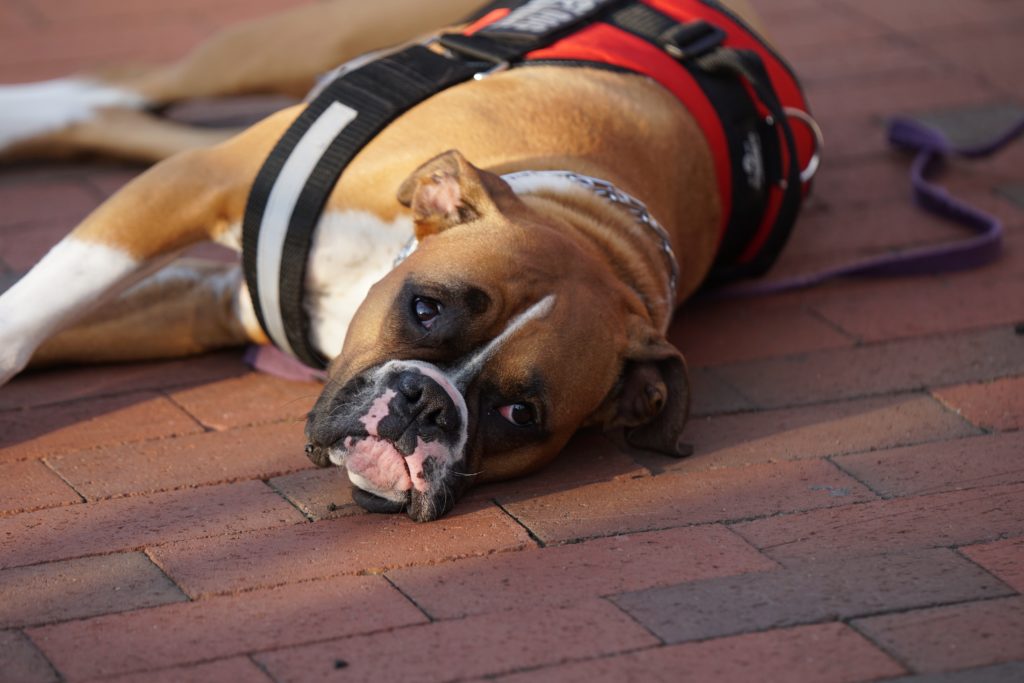
Leash
Service Dogs are exceptionally well trained and will not leave their owner’s side. However, for the comfort and reassurance of the public, leashing a Service Dog is necessary when out and about. Leashes come in a wide range of lengths, though the recommended length is 4-6 feet.
What type of material to choose for a leash depends on the dog breed and task. For example, a large service dog that helps to maneuver a wheelchair may require a sturdier, thicker leash.
Head Halter
Typically, head halters are devices used in the training of Service Dog puppies. However, head halters can also be useful in cases where owners may be unable to communicate with a Service Dog. The head halters allow an owner to give immediate directions, without the need for verbal or visual cues, just by tugging at the halter.
Show everyone that the rights of your Service Dog should be respected. Get your Service Dog registered.
Harness
A harness provides a way for Service Dogs to pull their owner or guide them out of an area. A harness also allows a Service Dog to pull on a wheelchair or provide balance to its handler. The harness spreads pressure throughout the chest and shoulders of a Service Dog, allowing the dog to manage heavy weights without injury.
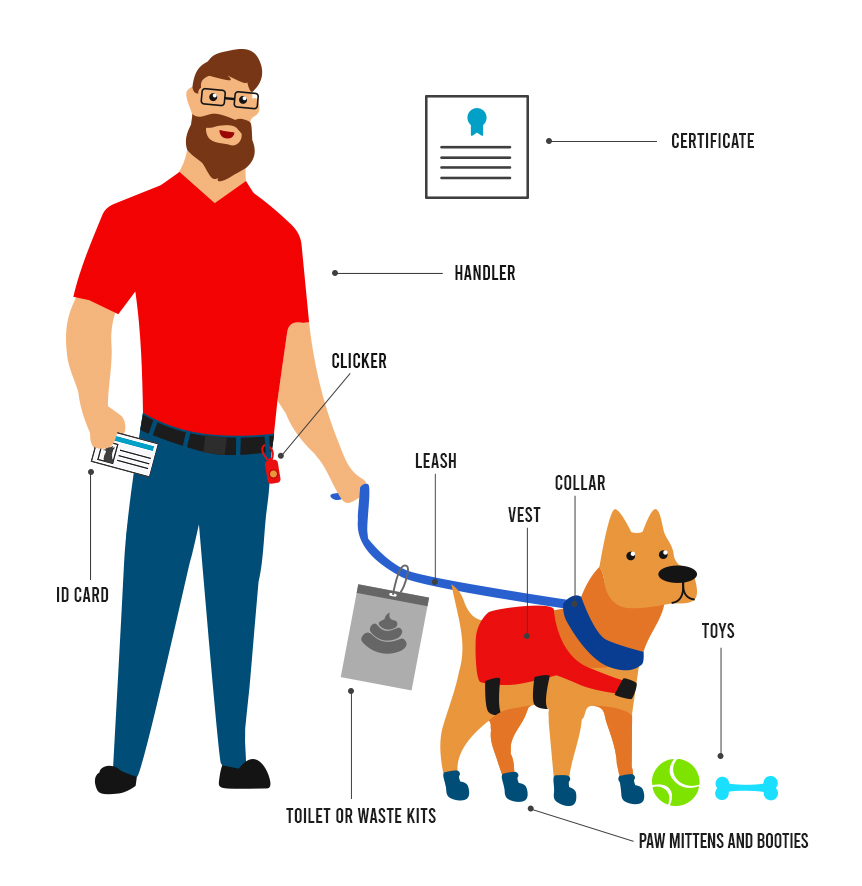
Toilet or Waste Kits
Even Service Dogs have little “accidents”. Although very rare, a Service Dog may be unable to hold their business for later or may unexpectedly become ill. In these situations, having a waste kit on hand can make life a whole lot easier for both, the owner and the service dog.
Dog waste kits can contain plastic waste bags, a waterproof pad, towel wipes, and hand sanitizer. Owners can add whatever else they feel might be necessary to provide a quick clean up.
Clickers
Clickers are mainly a training device for Service Dogs. They’re called “clickers” because they emit a clicking sound initiated by the trainer. The clicking sound provides immediate feedback, instead of a positive verbal response from the owner, which may be confusing for a puppy. For example, a trainer may initiate a clicking sound immediately after a dog sits after he’s asked to “sit.” The dog identifies the clicking sound as positive feedback that he performed the task correctly.
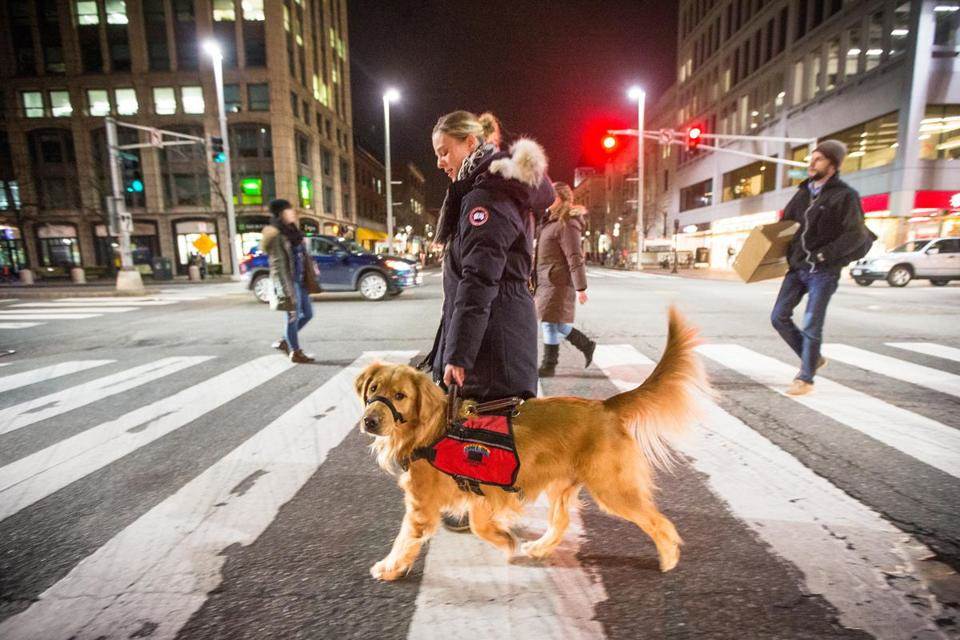
Muzzle
Because Service Dogs undergo extensive training, they don’t require muzzles. Though muzzles aren’t necessary for Service Dogs, they do have a role in certain situations. When in extremely crowded areas or locations where there may be numerous unsupervised children, a muzzle can provide any bystanders with a sense of security. Some people are fearful of dogs in general, and having a muzzle on a Service Dog can provide a degree of reassurance for the public. If a muzzle impedes on a Service Dog’s tasks, however, then the muzzle is not recommended for use.
Service Dogs are trained to be non-violent and tolerate any situation. However, if a Service Dog is injured, a muzzle may be required. Even the most well-trained dogs may bark, nip or bite when they have an injury.
Toys, Treats, and Relaxation
At the end of the day, Service Dogs are just like humans—they need to rest. When they’re off duty, Service Dogs are just like any other dogs. They enjoy playing with toys, being silly, and letting their pent up energy loose. Toys and activity are good for their wellbeing and make for better Service Dogs.
Healthy treats can provide positive re-enforcement for dogs and promote bonding with owners. Making time for relaxation and allowing Service Dogs time off to be regular dogs creates a work-life balance—something even Service Dogs need.
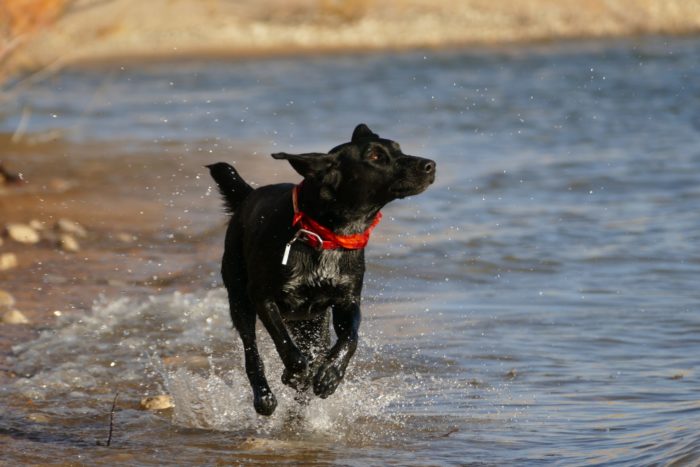
Conclusion
Service Dogs don’t require a ton of expensive gear, but they do need the basics. Some voluntary items, like a harness and vest, may depend on the owner’s needs and wishes. Others, like an ID card or a legitimate certification, can help handlers build more confidence bringing their Service Dog along.
But never forget, although Service Dogs take care of humans, they also need to be taken care of simply as a dog. Despite all the training and supplies, a Service Dog needs understanding, nurturing, care, and some time off to be a dog.
About the Author: The writing team at Service Dog Certifications is made up of folks who really know their stuff when it comes to disability laws and assistance animals. Many of our writers and editors have service dogs themselves and share insights from their own experiences. All of us have a passion for disability rights and animals.
5 comments
Leave a Reply Cancel reply
Latest Posts

Can Dogs Eat Pineapple?
Yes, dogs can safely eat fresh pineapple in moderation. This comprehensive guide combines scientific research with practical advice to help you safely share this tropical fruit with your canine. ⚡🍍 Quick Facts 🍍⚡ ✅ Fresh pineapple is safe in moderation ❌ Avoid canned, dried, and juice forms 🥣 2-3 small chunks per […]

Read More

How to Train Your Service Dog for Grounding Tasks
If you’ve ever experienced a panic attack or severe anxiety, you know how overwhelming the symptoms can feel — racing thoughts, pounding heart, that disconnected sensation that makes the world seem far away. Maybe you’ve tried various coping strategies: meditation apps, breathing exercises, and therapy. While these tools can be incredibly helpful, there’s another powerful […]

Read More
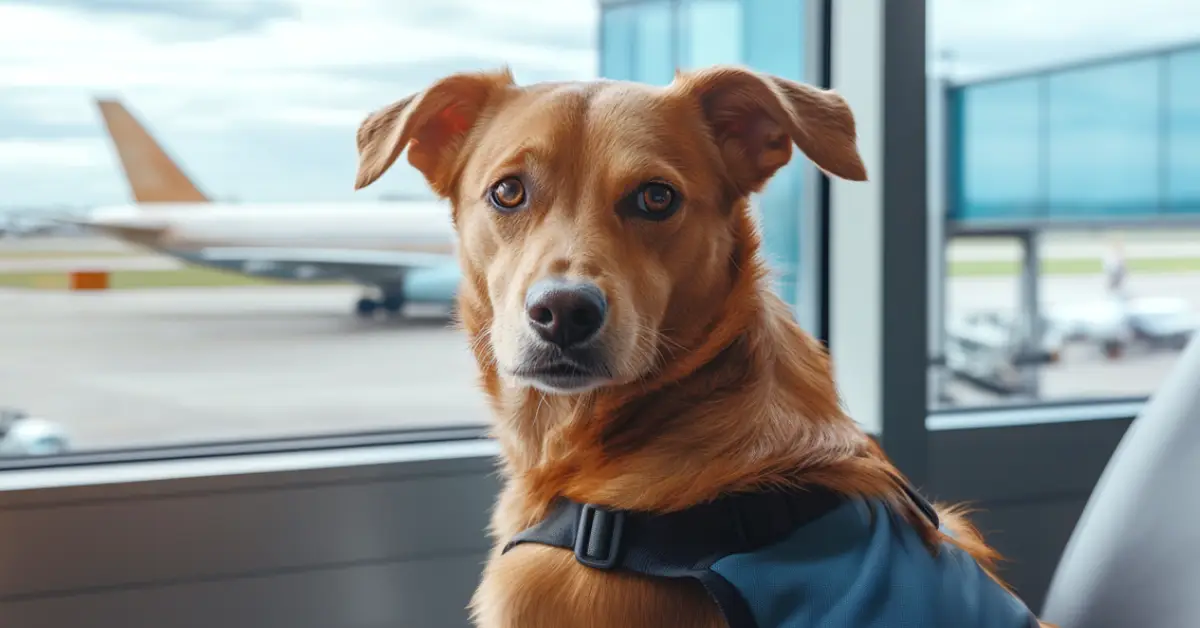
The Air Carrier Access Act and Service Dogs
If you rely on a service dog, you need to know about the Air Carrier Access Act (ACAA). The ACAA is a U.S. federal law that gives you the right to bring your service dog in the plane cabin on all flights to, from, and within the United States. The ACAA, along with HUD’s housing […]

Read More
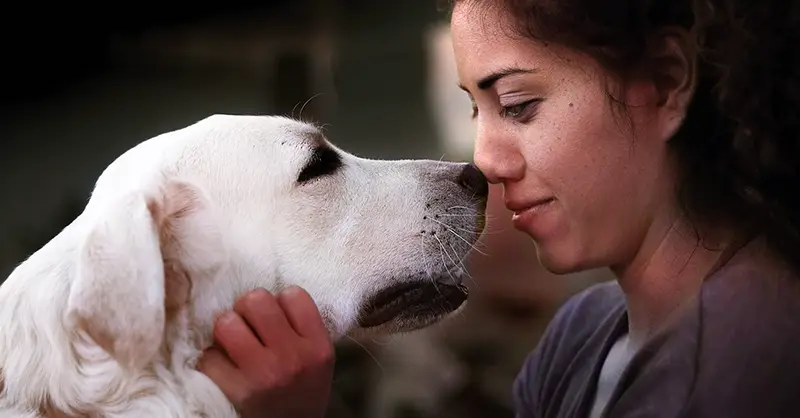
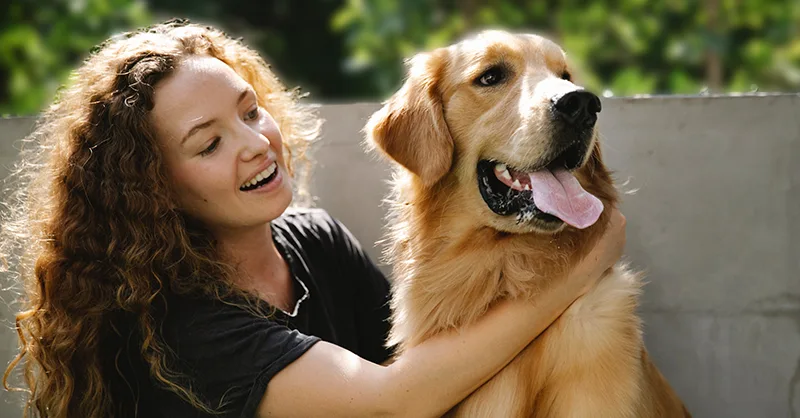
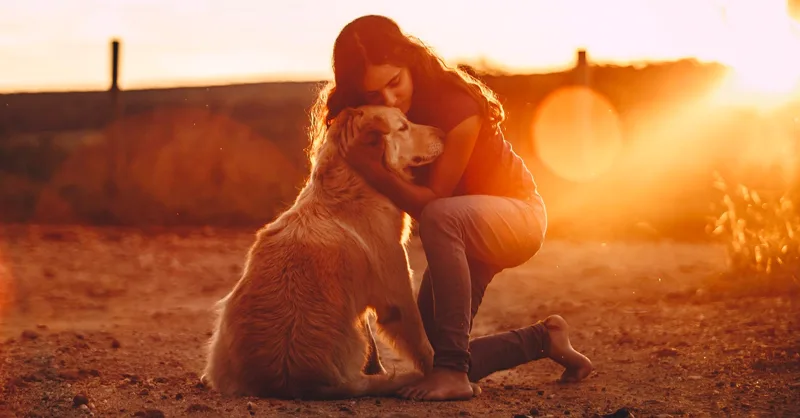
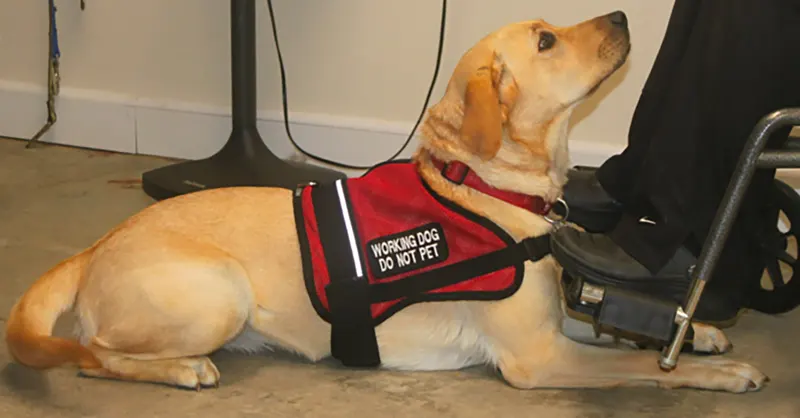



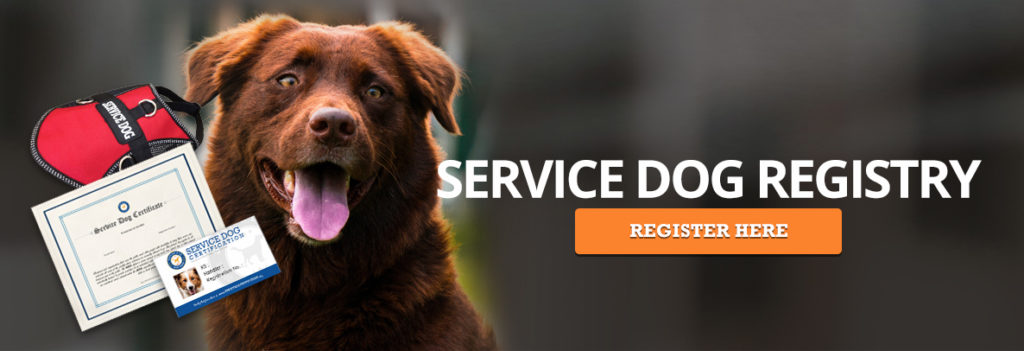

There is no such thing as a legal service dog certification. The AKC has the gold standards but they are not required by law. It scares people and they pay in to the scheme
It is correct that you do not need any type of certification to have a service dog. Any certification or registration program is completely optional for service dog owners.
Hi,
I have had and trained service dogs for over 25 years.
In my experience, when in public, a muzzle Screams to the public that the dog is a nuisance and Dangerous.
A Well Trained Legitamate Aervice Dog should Never Need a muzzle while working. Only if it’s Severely wounded and could bite out of a pain reaction.
If the dog in question cannot pass a basic public access test (like the AKC CGC) with the gear used in said test, or they cannot appropriate walk on a basic leash, they are NOT Yet properly trained and Should NOT be taken out amongst the public.
That being said, my Service Dog Was Attacked by a “protection dog” (attack dog) GSD.
It was/is being abused in its training. It goes after children, pets and people equally.
But it Especially HATES my Service Dog. Last month, it charged through a 3 foot densely grown decorative hedge, destroyed it in 3 places on top and tore a giant hole at ground level, where it broke through and grabbed my dog by the face, biting him Twice with 8 Deep Puncture wounds Before my dog could back up and get away behind the decorative porch railing.
I was left with a bill over $800.00 and I’m in the process of getting the dog reported to the State and County Authorities, so that whenver it’s outside, it Has to be muzzled.
State and Federal laws were broken. It would be more humane for the dog to be Euthanized than left as a dangerous dog in the community. The abuse it endures daily is Ridiculous and Inhumane.
Just a good example. Many untrained EAS’s in public are ill behaved and generally untrained. We’ve been lunged at and/or physically attacked 8 times since January… it’s now November. It’s traumatizing for both my dog and I.
Imagine someone stomping up to you with a raised fist, screaming at you.
Even if they don’t make Physical Contact, it still constitutes Assault.
The same is true for Daily, Hourly, Highly Trained Service Dogs.
The emotional toll is tantamount to the EAS owner dumping someone out of their wheelchair because they like the looks of using one and want one. It makes them happy because they can get attention.
It’s Ridiculous. ESA’s are NOT Allowed By Any Law to be taken out in public. The laws put in place were to protect ppl from losing their furry family members due to housing.
We’re sorry to hear about your experience. It is correct that ESAs do not have any public access rights. They are only protected in the home under the Fair Housing Act. This is a common misconception we try to correct through our publications.
you keep mentioning extensive training. That does not have to be the case. Training can come from the owner/handler.